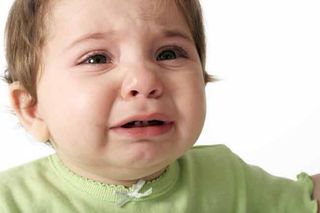
Why Climate Change is a U.S. Children's Health Issue (Op-Ed)

Frederica Perera is a professor of environmental health at the Columbia University Mailman School of Public Health and director of the Columbia Center for Children's Environmental Health. Patrick Kinney is a professor of environmental health at the Columbia University Mailman School of Public Health and director of the Columbia Climate and Health Program. The authors contributed this article to Live Science's Expert Voices: Op-Ed & Insights.
Coming on the heels of recent reports from the Intergovernmental Panel on Climate Change, this week's report from the U.S. National Climate Assessment makes it clear that climate change is already affecting health in the United States and that policies to curb climate change can improve the health of Americans while also avoiding unprecedented and unpredictable changes in the Earth system. However, largely missing from the public discussion are the multiple threats posed to children's health by climate change and by its root cause, fossil-fuel burning. This is a critical omission because burning fossil fuel not only emits carbon dioxide, the major human-produced greenhouse gas, but also generates a toxic mix of health-damaging pollutants. [5 Ways Climate Change Will Affect Your Health ]
Burning fossil fuels heats the atmosphere, and like a super-sponge, warmer air retains more moisture, leading to longer droughts in some areas and bigger storms in others. These climate events endanger children's health in a number of ways. For example, drought leads to malnutrition, storms cause injuries and spikes in waterborne infectious disease and heat waves lead to dehydration and heat stress.
It's no wonder that the World Health Organization (WHO) states that kids bear the health brunt of global warming around the globe. In fact, WHO estimates 88 percent of climate-change-related illnesses and injuries occur in children under age five. Infants and young children are particularly vulnerable to heat waves because their immature regulatory systems make them more susceptible to heat stroke, heat stress, kidney disease and respiratory illnesses. In July 2006, a devastating heat wave in California sent 2,500 kids to emergency rooms.
Less often appreciated is the threat to children's health from the toxic co-pollutants generated right alongside carbon dioxide when coal, oil, gas and diesel fuel are burned to power vehicles, heat and cool homes, and fuel factories. These health-damaging pollutants include fine particles that penetrate deep into the lungs of pregnant mothers and children, along with a host of harmful organic chemicals, metals and sulfur oxides, nitrogen oxides, and compounds that form ground-level ozone smog. Many studies, including our own, show that the developing fetus and young child are much more vulnerable than adults to the toxic effects of these air pollutants. Fine particle pollution causes or accelerates a range of disease processes, including clogging of the arteries, chronic lung disease, and lung cancer.
Unfortunately, air pollution levels have increased as a result of warmer temperatures. Higher temperatures due to climate change accelerate the formation of ground-level ozone, a powerful lung irritant. Time is not on our side: For example, our study projects that by the 2020s, in New York City, kids' ozone-related emergency room visits will likely rise by seven percent. Heat waves are predicted to become more frequent and dangerous soon in cities like Chicago and across the South and West.

The damage starts before children are born — fetuses aren't able to rapidly clear and detoxify pollutants that are transferred across the placental barrier and enter their bodies. Lower birth weight, increased infant mortality, deficits in lung function, developmental disorders including reduced IQ and behavioral problems, and increased cancer risk have all been linked to prenatal exposure to air pollution caused by fossil fuels.
Sign up for the Live Science daily newsletter now
Get the world’s most fascinating discoveries delivered straight to your inbox.
Once they're born, babies and children are more vulnerable to air pollutants than adults because, pound-for-pound, they take in more air. Their immature metabolic, detoxification, DNA-repair and immune systems put them at greater risk, too. Childhood exposure to air pollution is associated with greater incidence of respiratory symptoms, worse asthma and reduced lung function. Kids with repeated exposures can grow into adults with lung and cardiovascular diseases.
But here's the good news: Estimates of the economic costs of climate change and fossil-fuel burning reveal that a concerted policy to limit heat-trapping carbon pollution would have large and escalating benefits.
The estimated health-related costs of just six events related to climate change in the United States between 2000 and 2009 were about $14 billion, which included $740 million in health-care costs. The avoided health costs (benefits) attributed to the regulation of air pollutants by the U.S. Clean Air Act Amendments of 1990 are estimated to reach almost $2 trillion for the year 2020; this amount dwarfs the direct costs of putting those limits into effect ($65 billion). And besides dollars and cents, cleaner air days are days on which our children are healthier, able to go to school and learn, play, and be outdoors in the fresh air instead of gasping for breath from worsening air pollution. Best of all, they will have a brighter future.
Follow all of the Expert Voices issues and debates — and become part of the discussion — on Facebook, Twitter and Google +. The views expressed are those of the author and do not necessarily reflect the views of the publisher. This version of the article was originally published on Live Science.
Most Popular

